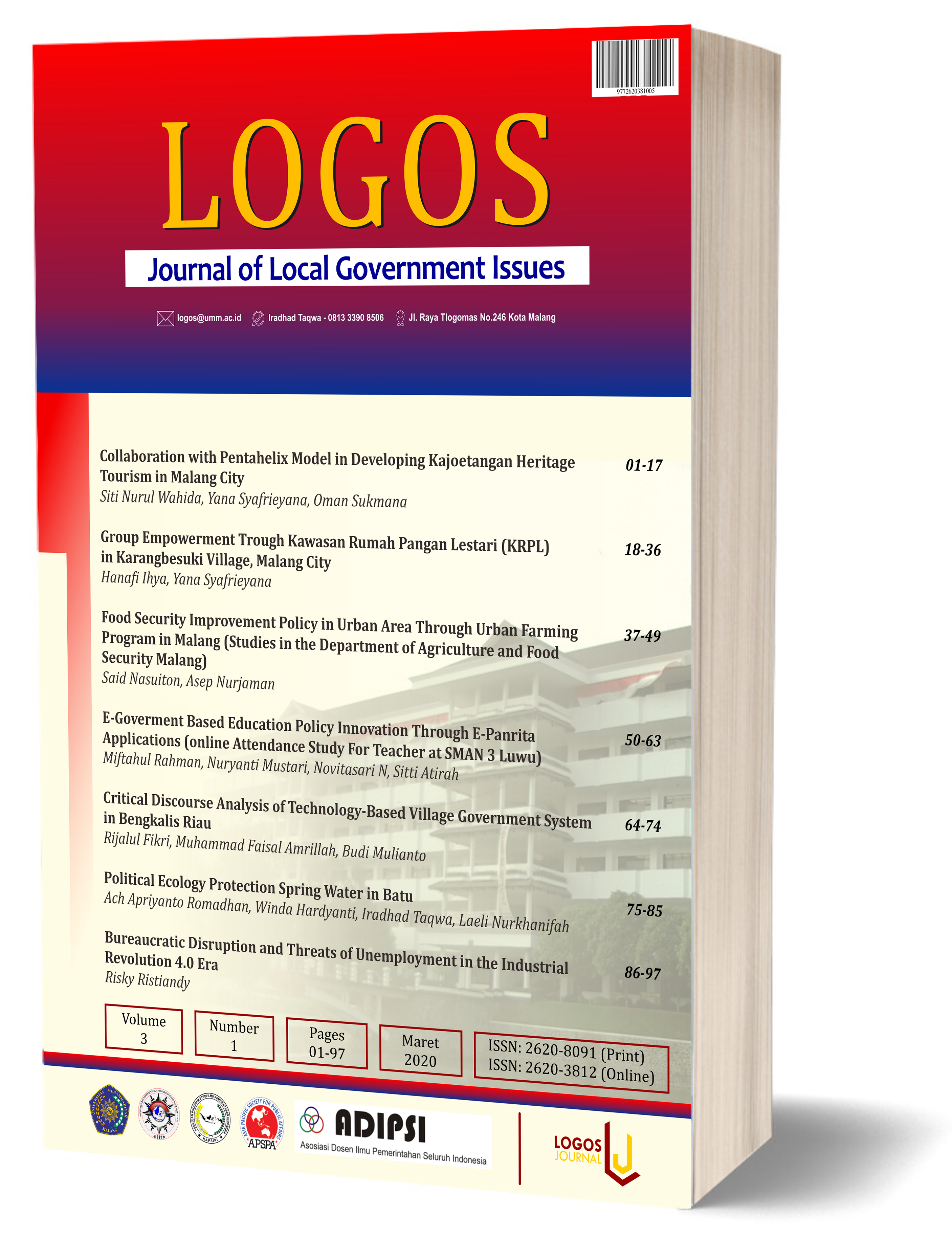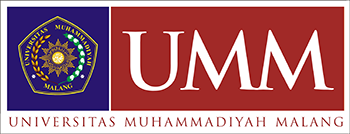Collaboration with Pentahelix Model in Developing Kajoetangan Heritage Tourism in Malang City
DOI:
https://doi.org/10.22219/logos.v3i1.10699Keywords:
collaboration, kajoetangan heritage, malang city, pentahelixAbstract
This study aims to reveal the development of Kajoetangan Heritage as a tourist attraction site in the city of Malang. The researchers use the Pentahelix model to look at the development. The involvement of pentahelix stakeholders (government, community, private sector, academics, and media) is intended to develop the tourism site thoroughly. So far, the main problem behind the less optimal management of Kajoetangan Heritage Tourism is the lack of development of accessibility, facilities, and infrastructure. This research uses descriptive qualitative method while the data were collected through observation, interviews, and documentation. The results show that the collaboration between the Kajoetangan community, Malang heritage community, Department of Culture and Tourism of Malang, Soak Ngalam business, City Guide FM, and Intitute of National Technology Malang had succeeded in increasing the promotion of the Kajoetangan Heritage. However, the collaboration had not been able to contribute maximally to the regional income. This happens because the problems of accessibility, facilities, and infrastructure were not resolved and there was a weak capacity of the actors involved.
Downloads
References
Emerson, K., & Nabatchi, T. (2015). Collaborative Governance Regimes: Washington: Georgetown University Press.
Lindmark, A., Sturesson, E., & Nilsson-Roos, M. (2009). Difficulties of Collaboration for Innovation-A study in the Öresund Region. M. Sc. Thesis: Lund University.
Miles, M. B., Huberman, A. M., Huberman, M. A., & Huberman, M. (1994). Qualitative data analysis: An expanded sourcebook: sage.
Silalahi, U. (2006). Metode Penelitian Sosial. Bandung: Unpar Press.
Slamet, R., Nainggolan, B., Roessobiyatno, R., Ramdani, H., & Hendriyanto, A. (2016). Strategi Pengembangan UKM Digital dalam Menghadapi Era Pasar Bebas. Jurnal Manajemen Indonesia, 16(2), 136-147.
Soemaryani, I. (2016). Pentahelix Model to Increase Tourist Visit to Bandung and Its Surrounding Areas through Human Resource Development. Academy of Strategic Management Journal, 15, 249-259.
Yawson, R. M. (2009). The Ecological System Of Innovation: A New Architectural Framework For A Functional Evidence-Based Platform For Science And Innovation Policy. Paper Presented at the The Future of Innovation Proceedings of the XXIV ISPIM 2009 Conference, Vienna, Austria.
Laws and Regulations:
Peraturan Menteri (Permen) Pariwisata Republik Indonesia Nomor 14 Tahun 2016 Tentang Pedoman Destinasi Pariwisata Berkelanjutan.
Republik Indonesia. Undang-Undang Nomer 11 Tahun 2010, Tentang Cagar Budaya
Peraturan Daerah Kota Malang Nomer 1 Tahun 2018 Tentang Cagar Budaya
Downloads
Published
How to Cite
Issue
Section
License
Copyright (c) 2020 Siti Nurul Wahida, Yana Syafrieyana, Oman Sukmana

This work is licensed under a Creative Commons Attribution-ShareAlike 4.0 International License.
Authors who publish with this journal agree to the following terms:
- Authors retain copyright and grant the journal right of first publication with the work simultaneously licensed under a Creative Commons Attribution-ShareAlike 4.0 International License. that allows others to share the work with an acknowledgment of the work's authorship and initial publication in this journal.
- Authors are able to enter into separate, additional contractual arrangements for the non-exclusive distribution of the journal's published version of the work (e.g., post it to an institutional repository or publish it in a book), with an acknowledgment of its initial publication in this journal.
- Authors are permitted and encouraged to post their work online (e.g., in institutional repositories or on their website) prior to and during the submission process, as it can lead to productive exchanges, as well as earlier and greater citation of published work (See The Effect of Open Access).

This work is licensed under a Creative Commons Attribution-ShareAlike 4.0 International License.













